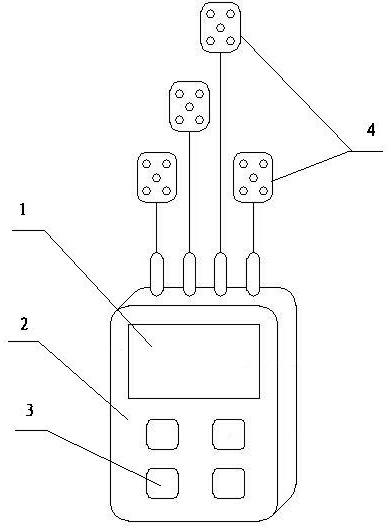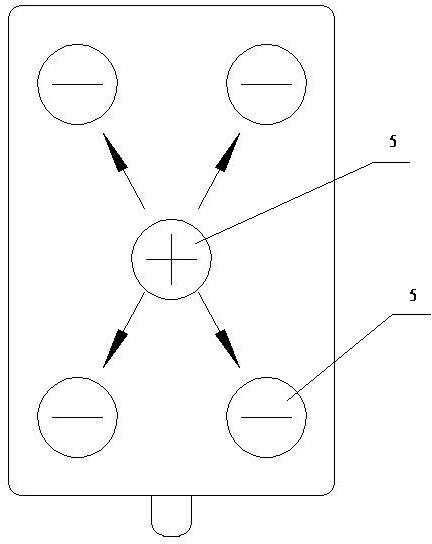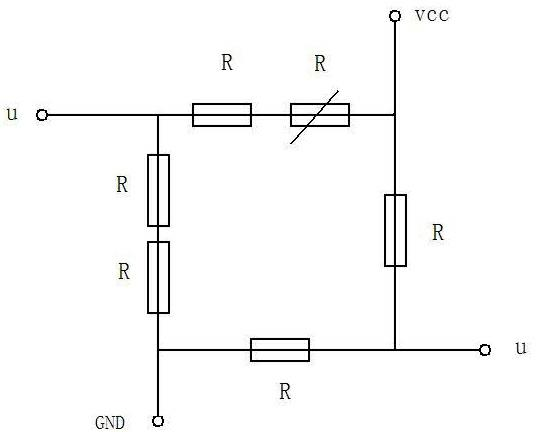Transcranial direct current stimulation instrument
A direct current and stimulator technology, applied in electrotherapy, treatment, etc., can solve problems such as current distribution, inconsistent resistance, and failure to achieve double-blindness, and achieve the effects of improving use efficiency, ensuring consistency, and being easy to use
- Summary
- Abstract
- Description
- Claims
- Application Information
AI Technical Summary
Problems solved by technology
Method used
Image
Examples
Embodiment 1
[0021] Embodiment 1, with reference to Figure 1-2 , a transcranial direct current stimulator, which includes a housing 2 and a surface electrode 4, the housing 2 is provided with a display screen 1 and buttons 3, the housing 2 is provided with a circuit board, and the surface electrode 4 is connected to the circuit board through wires , there are several surface electrodes 4, and each surface electrode 4 includes 4 negative electrode sheets 5 and 1 positive electrode sheet 5, wherein the positive electrode sheet 5 is arranged in the middle, and 4 negative electrode sheets 5 surround the positive electrode The electrode sheets 5 are evenly distributed; the five electrode sheets 5 are circular conductive rubber electrode sheets, and the bottom surface of the electrode sheet 5 is provided with a fine sponge layer, and the five electrode sheets 5 are arranged on the rubber pad at the same time. insulated from each other.
Embodiment 2
[0022] Embodiment 2, in the transcranial direct current stimulator described in embodiment 1: the number of surface electrodes 4 is 2-4.
Embodiment 3
[0023] Embodiment 3, in the transcranial direct current stimulator described in Embodiment 1 or 2: the diameter of the electrode sheet 5 is 8 mm, the thickness of the fine sponge layer is 5 mm, and the rubber pad is a square with a size of 5×7 cm.
PUM
| Property | Measurement | Unit |
|---|---|---|
| Diameter | aaaaa | aaaaa |
| Thickness | aaaaa | aaaaa |
Abstract
Description
Claims
Application Information
 Login to View More
Login to View More - R&D
- Intellectual Property
- Life Sciences
- Materials
- Tech Scout
- Unparalleled Data Quality
- Higher Quality Content
- 60% Fewer Hallucinations
Browse by: Latest US Patents, China's latest patents, Technical Efficacy Thesaurus, Application Domain, Technology Topic, Popular Technical Reports.
© 2025 PatSnap. All rights reserved.Legal|Privacy policy|Modern Slavery Act Transparency Statement|Sitemap|About US| Contact US: help@patsnap.com



